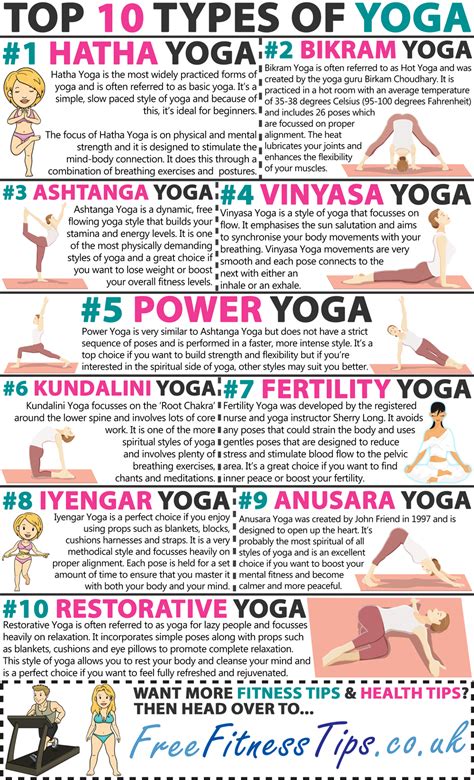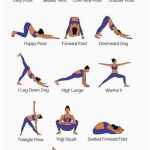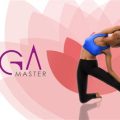Comparing Yoga Types by Intensity: A Complete Guide for Practitioners
Yoga has evolved into various styles that cater to different needs and fitness levels. Whether you’re looking for an intense physical challenge or a more meditative, gentle practice, there’s a type of yoga that fits your goals. This guide ranks popular yoga types based on their intensity levels—from mild to intense—and provides insights into their key benefits, techniques, and who they’re best suited for.
Introduction: Navigating the Yoga Spectrum
The diversity in yoga practices can be overwhelming, especially for beginners. Yoga types range from highly vigorous, demanding styles that test strength and endurance, to softer, slower-paced forms that focus on mindfulness and flexibility. This article organizes and explains the intensity of various yoga types while keeping in mind accessibility, fitness levels, and personal goals.
Key Concepts
- Intensity: Refers to the physical exertion required in a given yoga practice. Higher-intensity types generally focus on strength, stamina, and cardiovascular endurance.
- Flow: The seamless transition between poses in certain yoga styles, which can increase the overall physical and mental demand of the practice.
- Breathwork (Pranayama): A fundamental component across all types of yoga that influences both the intensity and meditative aspects of the practice.
Historical Context: Yoga’s Evolution Across Intensity Levels
Yoga originated in India more than 5,000 years ago and was primarily practiced as a means of spiritual growth. Over the centuries, it has expanded to include more physically demanding forms. The earliest forms of yoga, like Hatha Yoga, were centered on asana (posture) and breath control, but more modern, dynamic practices such as Vinyasa and Ashtanga have emerged, focusing on intensity and fitness. Understanding this historical development helps practitioners appreciate the wide range of experiences that yoga can offer today.
Current State Analysis: The Popularity of Yoga Types Today
Modern yoga offers various options, and practitioners often select styles based on their personal fitness goals. Here’s a breakdown of the most popular yoga styles in practice today, arranged by their intensity:
| Yoga Type | Intensity Level | Key Focus | Ideal For |
|---|---|---|---|
| Hatha Yoga | Low | Gentle postures, mindfulness, breathing | Beginners, relaxation, low-intensity exercise |
| Yin Yoga | Low | Flexibility, long holds, mindfulness | Recovery, deep relaxation, stress relief |
| Restorative Yoga | Very Low | Complete relaxation, healing, meditative | People recovering from injuries, extreme relaxation |
| Iyengar Yoga | Moderate | Precise alignment, use of props, static poses | People with physical limitations, those seeking posture improvement |
| Vinyasa Yoga | Moderate to High | Fluid sequences, coordination with breath | Those looking for a cardio workout, intermediate to advanced practitioners |
| Ashtanga Yoga | High | Rigorous sequence, strength and flexibility | Advanced practitioners, those seeking discipline |
| Power Yoga | High | Strength, endurance, cardiovascular fitness | People looking for a gym-style workout |
| Bikram Yoga | High | 26 poses in a heated room | Those seeking intense sweating, detoxification |
| Hot Yoga | High | Various sequences in heated environments | People who enjoy high heat and intense physical challenges |
| Kundalini Yoga | Moderate | Energy awakening, chanting, spiritual practices | Practitioners seeking a mix of spiritual and physical practice |
Practical Applications: Choosing the Right Yoga Style
Choosing a yoga style depends on your personal goals, fitness level, and how much physical intensity you want to incorporate. Below are examples of when different types of yoga are particularly useful:
- Low-Intensity Yoga (Hatha, Yin, Restorative): Ideal for stress management, improving flexibility, and gentle rehabilitation. These practices also promote mindfulness and breathwork for mental clarity.
- Moderate-Intensity Yoga (Iyengar, Kundalini): Focuses on postural alignment and building internal awareness. These types are great for intermediate-level practitioners who want to combine physical and spiritual elements.
- High-Intensity Yoga (Vinyasa, Ashtanga, Power): Perfect for fitness enthusiasts looking for strength-building, endurance, and cardiovascular benefits. High-intensity types also promote better coordination and balance.
Case Studies: Experiences of Yoga Practitioners
Understanding real-life applications of yoga types can help illustrate how different styles suit varying needs. Here are case studies that highlight specific experiences:
- Athlete Rehabilitation (Yin Yoga): John, a professional runner recovering from a knee injury, turned to Yin Yoga to improve flexibility and promote joint recovery. His physical therapist recommended it because of its low-intensity focus on deep stretches.
- Weight Loss (Bikram Yoga): Anna, a 35-year-old office worker, decided to try Bikram Yoga for weight loss. The combination of heat and intense poses helped her shed 15 pounds over six months, while also increasing her stamina.
- Stress Relief (Hatha Yoga): Sara, a college student experiencing anxiety, found solace in Hatha Yoga. The slower pace allowed her to focus on breathing techniques that reduced her stress levels.
Stakeholder Analysis: Who Benefits from Each Yoga Type?
| Yoga Type | Primary Beneficiaries |
|---|---|
| Hatha Yoga | Beginners, people looking for low-intensity exercise |
| Vinyasa Yoga | Fitness enthusiasts, individuals seeking a cardio challenge |
| Restorative Yoga | Injury recovery patients, those looking for deep relaxation |
| Ashtanga Yoga | Advanced practitioners, disciplined yogis |
| Kundalini Yoga | Spiritual seekers, people interested in meditation and energy work |
| Bikram Yoga | People who enjoy extreme physical exertion and detox |
Implementation Guidelines: Adapting Yoga Intensity to Your Routine
To incorporate the right level of intensity into your yoga practice, follow these guidelines:
- Assess Your Fitness Level: Start by considering your current physical condition. Beginners should begin with low-intensity types such as Hatha or Yin Yoga.
- Set Clear Goals: Whether you’re aiming for stress relief, strength, or flexibility, knowing your goals will guide your choice of yoga style.
- Progress Gradually: Start with lower-intensity yoga types and move up to more demanding styles such as Vinyasa or Ashtanga as your fitness improves.
- Listen to Your Body: If you’re trying a new form of high-intensity yoga, take breaks as needed to avoid burnout or injury.
Ethical Considerations: Commercialization vs. Traditional Values
The rise in popularity of yoga has led to its commercialization, raising concerns among traditionalists. Some argue that styles like Power Yoga and Bikram Yoga distort yoga’s original intent, focusing more on physical intensity than on the mental and spiritual aspects. Balancing modern fitness goals with the ethical roots of yoga is essential to maintaining its integrity as both a physical and spiritual discipline.
Limitations and Future Research
While we’ve examined the most popular forms of yoga based on intensity, new styles continue to emerge. Future research could explore hybrid forms of yoga and their effectiveness for specific populations, such as athletes or individuals with chronic conditions. Moreover, research into the psychological benefits of intense yoga styles could provide a more complete picture of their overall impact on health and well-being.
Expert Commentary: Balancing Yoga’s Physical and Spiritual Benefits
Yoga remains a versatile practice that offers something for everyone. Whether you seek intense physical conditioning or a peaceful, meditative practice, there is a yoga style that meets your needs. However, practitioners should approach yoga holistically, respecting both the physical and spiritual dimensions that define its long-standing tradition.








